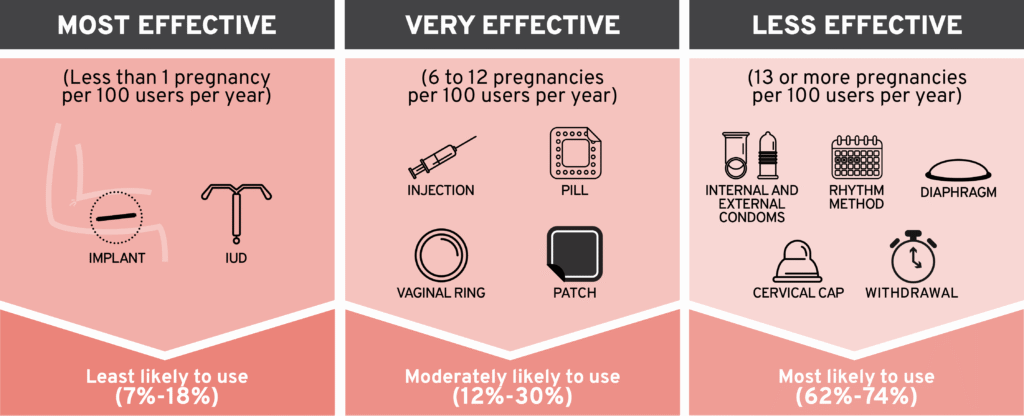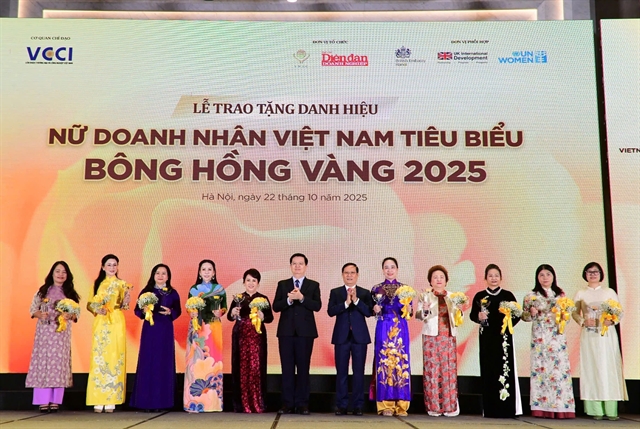Report on Gender Equality as a Catalyst for Sustainable Economic Development
Introduction: Aligning Economic Frameworks with Sustainable Development Goals
The concept of economy encompasses the production, distribution, and consumption of goods and services within a geographical area. Integrating a gender perspective into this framework is critical for understanding economic realities and achieving equitable outcomes. This report analyzes the role of gender equality, particularly as outlined in Sustainable Development Goal 5 (SDG 5), as a fundamental driver of economic progress and a prerequisite for achieving broader sustainable development objectives, including SDG 8 (Decent Work and Economic Growth) and SDG 10 (Reduced Inequalities).
The Economic Imperative of Gender Equality and SDG Alignment
Economic Potential and Global Disparities
Gender equality is an economic necessity. Women represent nearly half of the global population, yet their economic potential remains largely underutilized. This gap hinders progress toward SDG 8. A McKinsey Global Institute report estimates that advancing gender equality could contribute $12 trillion to the global GDP by 2025, highlighting the substantial economic returns of investing in women’s empowerment.
Global Gender Gap Index: A Measure of Progress Towards SDG 5
The World Economic Forum’s 2023 Global Gender Gap Index provides a quantitative assessment of gender parity across 146 countries, serving as a key indicator for progress on SDG 5. The findings reveal significant disparities across critical dimensions:
- Health and Survival: 96% gap closed
- Educational Attainment (SDG 4): 95.2% gap closed
- Economic Participation and Opportunity (SDG 8): 60.1% gap closed
- Political Empowerment: 22.1% gap closed
The persistent gaps in economic participation and political empowerment underscore the significant challenges remaining in achieving full gender equality and leveraging its economic benefits.
Barriers to Women’s Economic Participation
Systemic and Cultural Obstacles to SDG Achievement
Structural barriers are a primary impediment to women’s full economic participation, directly challenging the targets of SDG 5 and SDG 8. These include unequal pay, limited access to capital, and a disproportionate burden of caregiving responsibilities. The “glass ceiling”—an invisible barrier preventing women from advancing to senior leadership positions—is a global phenomenon that is particularly pronounced in regions with rigid workplace hierarchies and deeply entrenched traditional gender roles. Cultural norms, such as the expectation for women to leave the workforce after marriage or childbirth, contribute to an “M-curve” pattern in female labor force participation, limiting long-term career progression and economic contribution.
Strategic Interventions for SDG Advancement
Empowering Women through Financial Inclusion (SDG 1, SDG 5, SDG 8)
Targeted interventions have proven effective in driving economic progress. In Bangladesh, microfinance organizations like Grameen Bank and BRAC have empowered women entrepreneurs through small loans, enabling them to generate income and improve their families’ living standards, thereby contributing to SDG 1 (No Poverty) and SDG 8.
The Role of Education in Economic Empowerment (SDG 4)
Investing in girls’ education is fundamental to achieving SDG 4 (Quality Education) and yields significant economic returns. Educated women are more likely to participate in the labor force, earn higher wages, and invest in the next generation. UNESCO estimates that each additional year of schooling for girls increases a country’s GDP growth rate by 0.37%. The World Bank further projects that closing educational gaps could generate up to $30 trillion in lifetime earnings globally.
Policy Recommendations for Accelerating Progress on the SDGs
To create an enabling environment for female labor force participation and advance the Sustainable Development Goals, the following policy interventions are recommended:
- Implement Equal Pay and Anti-Discrimination Laws: Enforcing legislation that ensures equal remuneration for work of equal value is critical for closing the gender pay gap and achieving targets under SDG 5 and SDG 8.
- Guarantee Access to Quality Education: Policies that ensure girls’ access to education, particularly in low-income nations, are essential for fulfilling SDG 4 and unlocking long-term economic potential.
- Provide Childcare Support and Parental Leave: Subsidized childcare and equitable parental leave policies alleviate the burden of caregiving, enabling women to participate fully in the workforce, in line with SDG 5.
- Expand Access to Credit and Entrepreneurship Programs: Supporting women entrepreneurs through financial inclusion and training programs stimulates business creation and job growth, directly contributing to SDG 1, SDG 5, and SDG 8.
Conclusion: Collective Action for a Sustainable and Equitable Future
Investing in women’s empowerment is a strategic imperative for achieving resilient and thriving economies. The successful implementation of gender-inclusive policies is a powerful catalyst for unlocking untapped economic potential and fostering equitable societies. Achieving SDG 5 is not a standalone goal but a driving force for sustainable development and shared prosperity. This requires concerted action from governments, businesses, and civil society to dismantle barriers and build a world where gender equality fuels economic growth for all.
Analysis of Sustainable Development Goals in the Article
1. Which SDGs are addressed or connected to the issues highlighted in the article?
SDG 5: Gender Equality
- The article’s central theme is gender equality, focusing on economic and political disparities between genders. It discusses the importance of women’s empowerment, equal participation in the economy, and the need to close gender gaps in various dimensions.
SDG 8: Decent Work and Economic Growth
- The article directly links gender equality to economic progress, citing that advancing women’s equality could add “$12 trillion to global GDP.” It addresses issues like equal pay, female labor force participation, entrepreneurship, and creating an inclusive workforce, all of which are central to SDG 8.
SDG 4: Quality Education
- The text emphasizes that “access to education is fundamental to women’s empowerment.” It highlights the economic benefits of educating girls, mentioning that closing education gaps could generate trillions in lifetime earnings and that each additional year of schooling for girls increases a country’s GDP growth.
SDG 1: No Poverty
- The article discusses microfinance initiatives, such as those by Grameen Bank, which empower women entrepreneurs with small loans. These programs enable women to “start businesses, generate income, and improve their families’ living standards,” directly contributing to poverty reduction.
SDG 10: Reduced Inequalities
- The entire article is about reducing inequalities based on gender. It calls for eliminating discriminatory laws and practices, ensuring equal opportunities in the workplace, and promoting financial inclusion for women to address systemic biases and disparities.
2. What specific targets under those SDGs can be identified based on the article’s content?
SDG 5: Gender Equality
- Target 5.1: End all forms of discrimination against all women and girls everywhere. This is addressed by the recommendation to implement “anti-discrimination laws.”
- Target 5.4: Recognize and value unpaid care and domestic work. This is connected to the recommendation for “childcare support and parental leave policies” to alleviate disproportionate caregiving responsibilities.
- Target 5.5: Ensure women’s full and effective participation and equal opportunities for leadership in political, economic and public life. The article discusses this through the “glass ceiling” phenomenon, the low political empowerment gap closure (22.1%), and cultural barriers limiting women’s career advancement.
- Target 5.a: Undertake reforms to give women equal rights to economic resources, as well as access to… financial services. This is directly supported by the recommendation for “access to credit and entrepreneurship programs” and the mention of microfinance.
SDG 8: Decent Work and Economic Growth
- Target 8.5: Achieve full and productive employment and decent work for all women and men… and equal pay for work of equal value. This is explicitly mentioned in the recommendation for “equal pay and anti-discrimination laws: ensuring equal remuneration for men and women performing the same work.”
SDG 4: Quality Education
- Target 4.5: Eliminate gender disparities in education and ensure equal access to all levels of education. This is a core recommendation of the article, which states that “policies that guarantee girls access to quality education, particularly in low-income countries, yield significant economic benefits.”
SDG 1: No Poverty
- Target 1.4: Ensure that all men and women, in particular the poor and the vulnerable, have equal rights to economic resources, as well as access to… financial services, including microfinance. The article highlights the success of microfinance programs like Grameen Bank in empowering women entrepreneurs.
SDG 10: Reduced Inequalities
- Target 10.2: Empower and promote the social, economic and political inclusion of all, irrespective of… sex. The article’s main argument is that investing in women’s empowerment and implementing inclusive policies are essential for economic growth and equitable societies.
- Target 10.3: Ensure equal opportunity and reduce inequalities of outcome, including by eliminating discriminatory laws, policies and practices. This is addressed by the call for “equal pay and anti-discrimination laws” to tackle systemic barriers.
3. Are there any indicators mentioned or implied in the article that can be used to measure progress towards the identified targets?
- Global Gender Gap Index (GGGI): The article explicitly cites this index and its four sub-indices as a measure of gender disparities.
- Health and Survival gap: 96% closed.
- Educational Attainment gap: 95.2% closed.
- Economic Participation and Opportunity gap: 60.1% closed.
- Political Empowerment gap: 22.1% closed.
- Contribution to Global GDP: The article uses the potential increase in global GDP (“$12 trillion to global GDP by 2025”) as an indicator of the economic impact of achieving gender equality.
- Female Labor Force Participation Rate: This is a key implied indicator, discussed through the “M-curve” pattern in some Asian countries, which reflects women’s withdrawal and re-entry into the workforce.
- Gender Wage Gap: The recommendation for “equal pay” and “equal remuneration” implies that the gap in wages between men and women for the same work is a critical indicator of economic inequality.
- Proportion of Women in Senior/Leadership Positions: The discussion of the “glass ceiling” as an invisible barrier preventing women from advancing to senior positions implies that the percentage of women in leadership roles is an important indicator of progress.
- Girls’ Education Levels and GDP Growth Rate: The article mentions a UNESCO estimate that “each additional year of schooling for girls increases a country’s GDP growth rate by 0.37%,” using educational attainment as a predictive indicator for economic growth.
4. Table of SDGs, Targets, and Indicators
| SDGs | Targets | Indicators |
|---|---|---|
| SDG 5: Gender Equality |
|
|
| SDG 8: Decent Work and Economic Growth |
|
|
| SDG 4: Quality Education |
|
|
| SDG 1: No Poverty |
|
|
| SDG 10: Reduced Inequalities |
|
|
Source: meer.com







